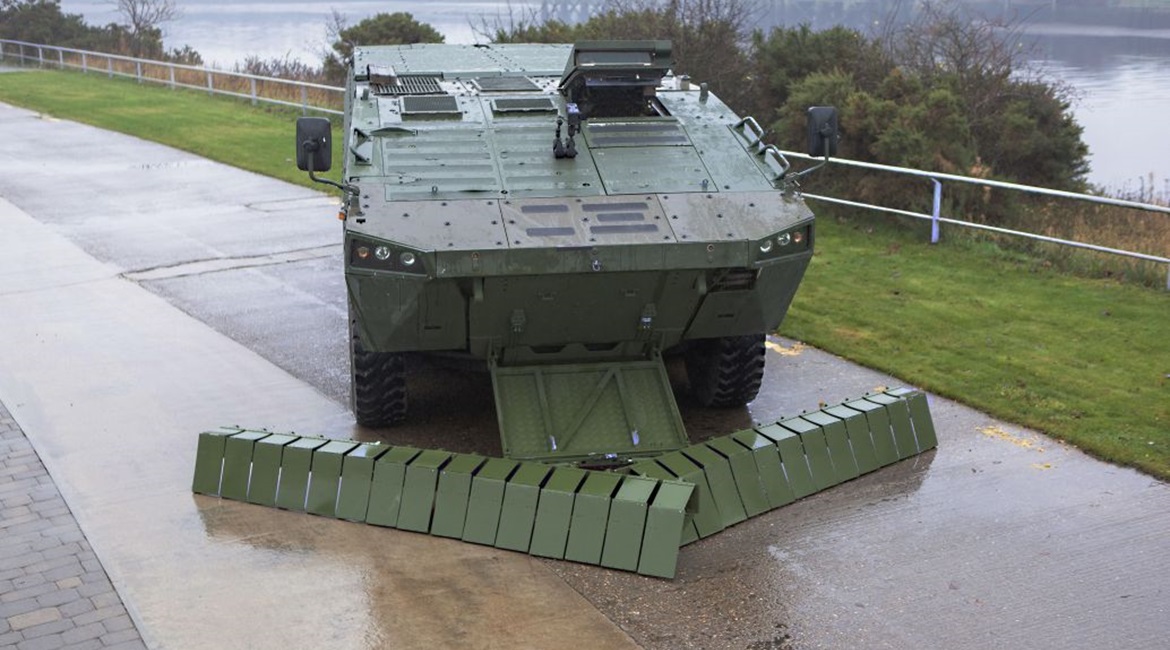
Pearson Engineering has launched its Threat-Sense and Threat-Pathway air-scatterable and surface placed mine clearance solutions: a machine learning-based mine detection and avoidance system, and an emergency deployable self-extraction mine clearance tool respectively.
The systems were revealed on 1 February.

Threat-Sense and Threat-Pathway shown on a representative AFV. The systems can be fitted to many military vehicles and provide an organic capability to self-extract from a position where mines prevent further manoeuvre. (Pearson Engineering)
Threat-Sense is a passive camera-based mine detection and avoidance system. Real-time feeds from vehicle visual and thermal spectrum cameras are passed through algorithms that utilise machine learning to compare objects within the imagery against pre-programmed and trainable libraries to identify possible anti-tank and anti-personnel mine threats. These are then overlaid onto screens at crew stations with confidence intervals and mine type identifiers, with audible warnings on detection of new threats. “The system serves as a tool to reduce the cognitive effort required of the operator without overriding human decision making, ultimately allowing them to take on a broader range of tasks,“ a Pearson Engineering spokesperson told Janes on 2 February.
Although the system has initially been developed for surface mine threats, the machine learning, trainable nature of the detection mechanism means that it can be expanded to additional threats.
“The current threat library is trained to detect PTM-1, PTM-3, PFM-1, [and] TM-62M mines. The design of the data generation mechanism that feeds it is such that the threat database can be trained and extended easily as per customer requirements, with little real data required,” the spokesperson told Janes
Looking to read the full article?
Gain unlimited access to Janes news and more...






